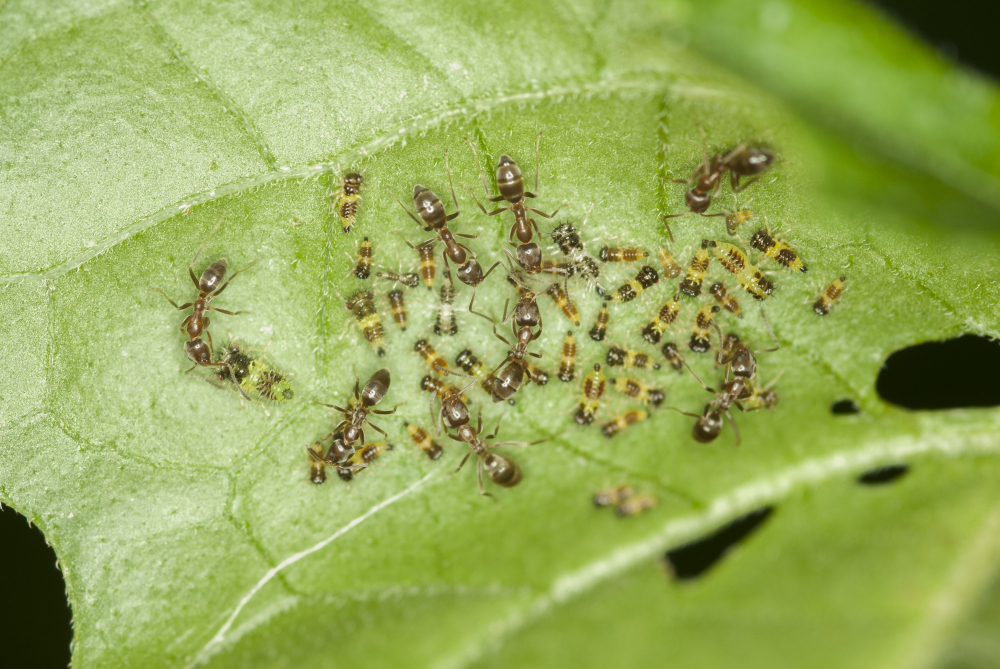Are you wondering why gnats have invaded your beloved plants? Well, fret not, for I have the answers you seek. In this article, we will delve into the intriguing world of gnats and explore the reasons behind their affinity for plants. Furthermore, I will equip you with effective methods to bid farewell to these pesky creatures once and for all.
Gnats, those tiny flying insects that seem to appear out of thin air, are often found buzzing around our plants. But why are they there in the first place? The answer lies in their attraction to the moist environment that plants provide. Gnats are particularly drawn to the decaying organic matter found in soil, which serves as their breeding ground. Additionally, the dampness and humidity in the vicinity of plants create the perfect conditions for gnats to thrive.
Now that we understand why gnats have taken up residence in our plants, it’s time to take action. There are several effective methods to eliminate these unwanted guests. One approach is to let the soil dry out between waterings, as this will discourage gnats from laying their eggs. Another option is to use natural repellents, such as neem oil or vinegar, which can be sprayed onto the plants to deter gnats. Additionally, implementing good hygiene practices, such as removing decaying plant matter and ensuring proper drainage, can help prevent gnat infestations in the future.

In conclusion, the presence of gnats in your plants can be attributed to their attraction to the moist environment and decaying organic matter. However, armed with the knowledge and methods provided in this article, you can now take control of the situation and bid farewell to these bothersome pests. So, fear not, dear plant lover, for your green companions shall soon be free from the clutches of gnats.
Why Is Your Plant Attracting Gnats?
Gnats can be a pesky problem for plant owners, but understanding why they are attracted to your plants is the first step in finding a solution. One possible reason for gnat infestations is overwatering your plants. When soil becomes overly damp, it creates the perfect breeding ground for gnats. Additionally, decaying organic matter in the soil, such as fallen leaves or dead plant material, can also attract gnats. Another common reason is poor drainage, which leads to waterlogged soil. This moist environment is highly appealing to gnats.
Overwatering and decaying matter attract gnats
Overwatering your plant can create a damp environment that gnat love. Additionally, decaying organic matter in the soil serves as a food source for gnats, attracting them to your plants.
Poor drainage leads to waterlogged soil
If your plants have poor drainage, the soil can become waterlogged. This moisture attracts gnats and provides them with an ideal breeding ground.
How To Fix Gnat Infestations in Plants
Gnat infestations in plants can be a frustrating problem, but there are several effective solutions to get rid of these pesky insects.
1. Identify the source of the infestation
To effectively eliminate gnats, it is crucial to determine the source of the problem. Check for overwatered or poorly drained soil, decaying organic matter, or excessive moisture in the plant’s environment.
2. Allow the soil to dry out
Gnats thrive in moist environments, so allowing the soil to dry out between waterings can help eliminate their breeding grounds. Be careful not to overwater your plants.
3. Use sticky traps
Sticky traps are an effective way to catch adult gnats. Place yellow sticky traps near the affected plants to attract and trap the insects.
4. Apply natural remedies
Natural remedies like neem oil or a mixture of water and dish soap can be sprayed on the plants to kill gnats. These solutions are safe for plants and pets.
5. Improve air circulation
Gnats are attracted to stagnant air. Increasing air circulation around your plants by using fans or opening windows can help deter them.
Remember, consistency is key when dealing with gnat infestations. By following these steps, you can effectively eliminate gnats and keep your plants healthy.
Common Reasons Why Gnats Invade Plants
Gnats are small flying insects that can be a nuisance when they infest your plants. Understanding why gnats are attracted to plants can help you take the necessary steps to prevent and eliminate these pests.
Moisture and Overwatering
One common reason why gnat invade plant is because of excessive moisture. Overwatering your plants can create a damp environment that attracts gnats. Ensure that you are not overwatering your plants and allow the soil to dry out between waterings.
Organic Matter and Decomposition
Gnats are also drawn to organic matter and decomposition. If you have decaying plant material or soil that is rich in organic matter, it can provide an ideal breeding ground for gnats. Regularly remove any dead leaves or plant debris from your plants to prevent gnats from being attracted to them.
By addressing these common reasons why gnats invade plants, you can effectively prevent and eliminate gnat infestations in your plants.
What Should I Do About Gnats in My Plants?
Gnats in plants can be a nuisance, but there are several steps you can take to eliminate them. First, you should identify the source of the infestation. Check for overwatered soil, decaying plant matter, or any other conditions that may attract gnats. Once you have identified the source, you can take action to eliminate it. For example, if the soil is too moist, allow it to dry out before watering again. You can also remove any decaying plant matter and replace it with fresh soil. Another option is to use sticky traps or insecticides specifically designed to target gnats. Additionally, you can try using natural remedies such as vinegar traps or neem oil to repel the gnats. Finally, make sure to maintain good plant hygiene by regularly cleaning your plants and avoiding overwatering.
Why Are Gnats Drawn to Plants?
Gnats are irresistibly drawn to plants due to several factors.
Attracted to moisture:
These tiny insects are attracted to the moisture present in the soil of potted plants. The damp environment provides them with the perfect breeding ground to lay their eggs.
Feeding on decaying matter:
Gnats are also attracted to decaying organic matter, such as fallen leaves or dead plant material. These decomposing substances release odors that act as a beacon for gnats.
Seeking shelter:
Plants offer gnats a safe haven from predators and harsh weather conditions. The foliage provides ample hiding spots for these pests to rest and reproduce. Furthermore, the warm and humid conditions inside a plant’s pot create an ideal environment for gnats to thrive. Therefore, it is crucial to understand the reasons behind gnats’ attraction to plants in order to effectively combat and prevent infestations.
How To Prevent Gnats in Your Plants
Preventing gnats from infesting your plants is crucial in maintaining their health and preventing potential damage. There are several steps you can take to keep gnats at bay. Firstly, make sure to avoid overwatering your plants, as excess moisture attracts gnats. Allow the soil to dry out slightly between waterings to discourage gnat larvae from thriving. Additionally, it is important to regularly clean up any fallen leaves or debris around your plants, as this can serve as a breeding ground for gnats. Furthermore, using a well-draining potting mix can help prevent water from pooling in the soil and attracting gnats. Lastly, consider using yellow sticky traps to catch adult gnats and reduce their population. By following these preventative measures, you can create an environment that is less appealing to gnats and keep your plants healthy and gnat-free.
What Should I Do If Gnats Infest My Plants?
If you find that your plants have been infested with gnats, it is important to take immediate action to prevent further damage. First, you should identify the source of the infestation. Check for any overwatered or decaying plant material, as this is often attractive to gnats. Once you have located the source, remove it and dispose of it properly. Next, you can use natural remedies such as neem oil or vinegar to repel the gnats. These can be applied directly to the soil or sprayed onto the leaves of the plant. Additionally, you should make sure to adjust your watering routine to prevent overwatering, as this can create a breeding ground for gnats. Finally, keep a close eye on your plants and continue to monitor for any signs of gnats. By taking these steps, you can effectively eliminate the gnat infestation and ensure the health of your plants.











I’ve had gnats in my plants too. It’s so annoying! Maybe it’s the soil moisture. Did the article say how to get rid of them?